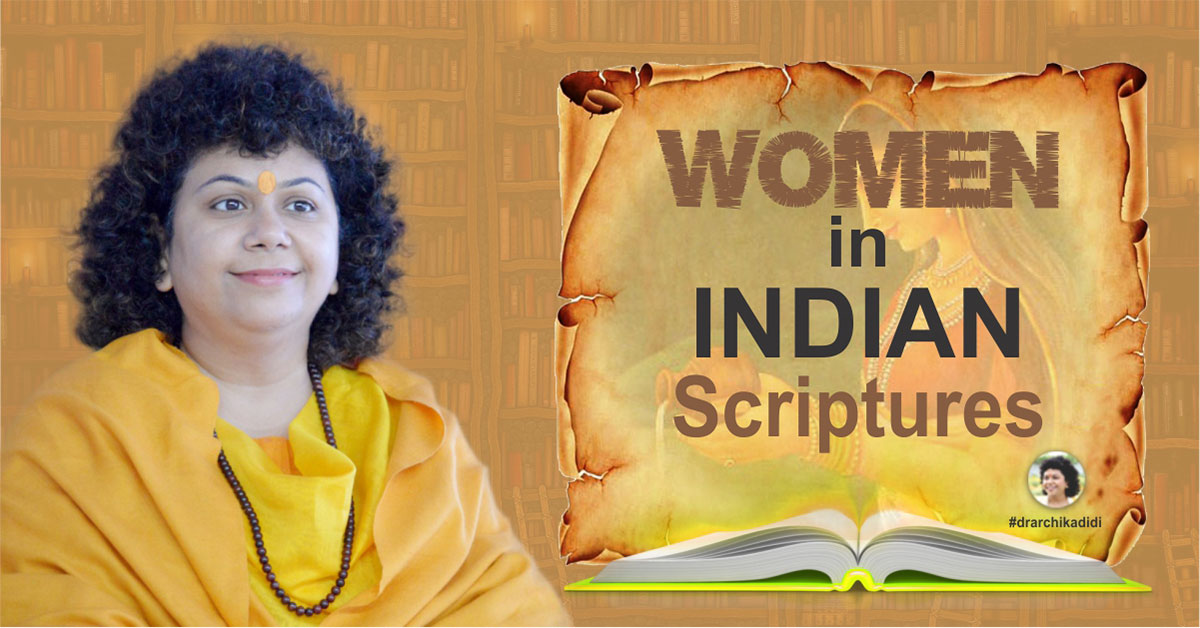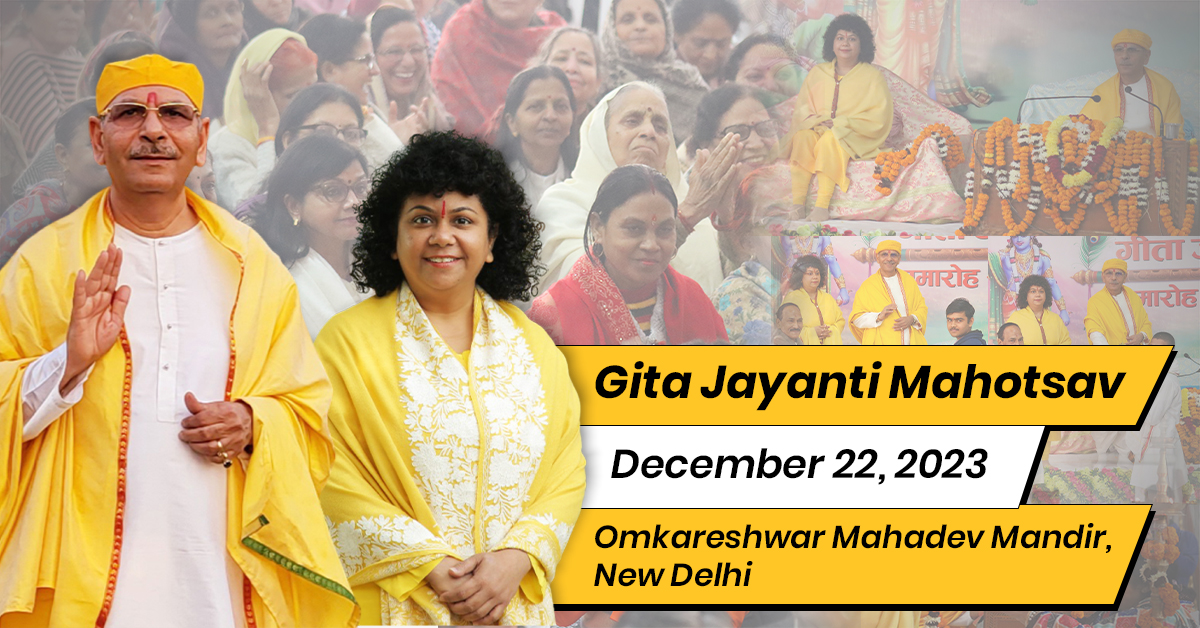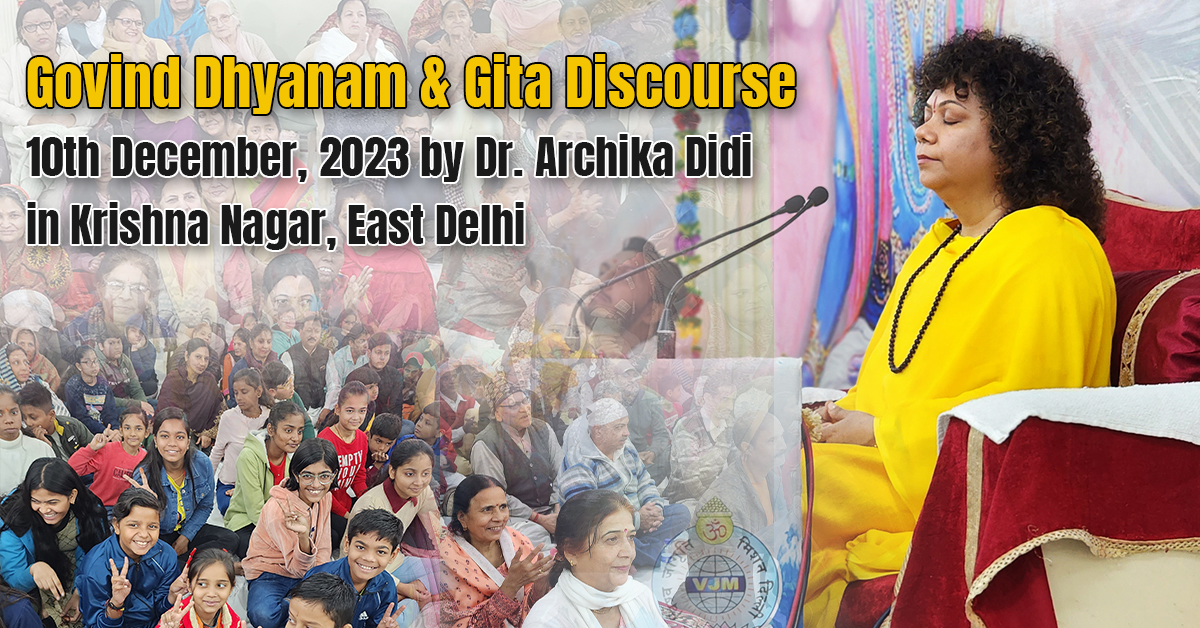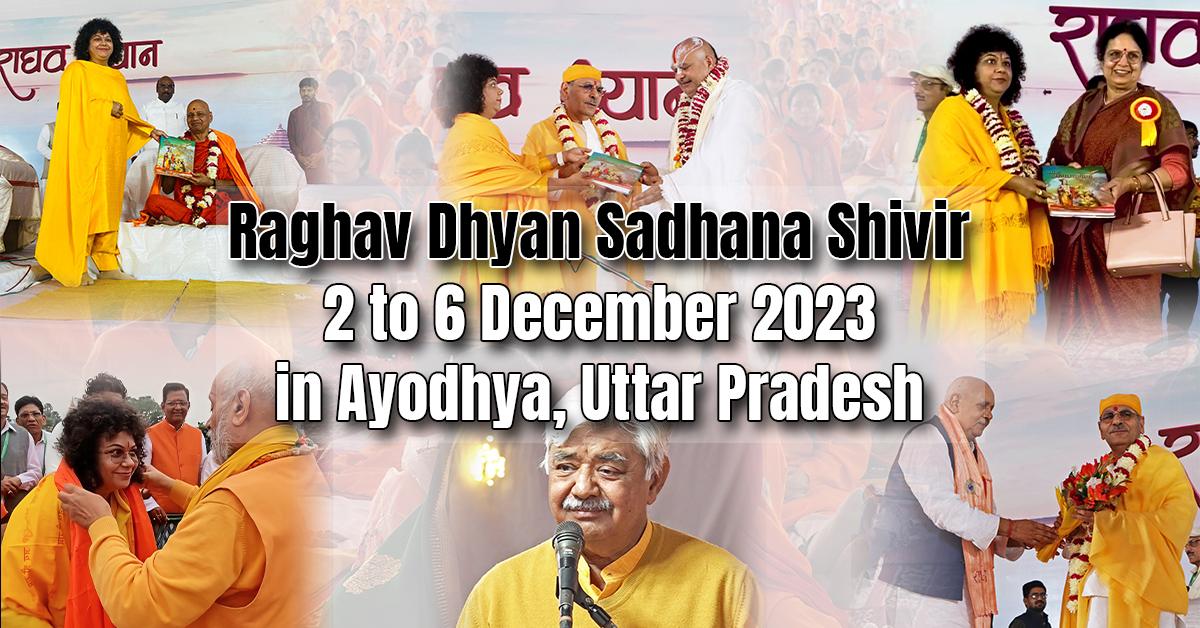Women in Indian Scriptures
The idea of leading a social life has lost its relevance because men and families which constituted society have become such loose links that they are broken and scattered even before they join together. In such a bleak and inane time the very idea of a social living is no more than a pipe dream. We can hardly talk of other living beings.
One can see these days so many classes and units in our society, which not only distrust one another but appear to be pitched against each other in a bitter struggle. The very formation of such bodies as the young men’s union, teachers’ union, children’s union, labour union, women’s union and other different unions and associations indicates that the era of mutual trust is over. Instead of talking about these various bodies, we will concentrate here on women’s unions.
Women Need Protection: In this age of the so-called development of civilization and culture, it is repeatedly said that atrocities had been perpetrated on women right from the very beginning, and men have treated them as objects of their passion and exploited them to the maximum. But this assertion is totally confusing and very far from truth. We can start looking from the times of the Vedas which are the cornerstones of human culture and deal with the issues related to women in effective and bold terms.
In the delineation of the authority of God, as the creator, nurturer and destroyer of the whole universe, the nature of woman comes out in an excellent and exquisite form. If, on one hand, God has been addressed in masculine terms and names also such as Brahma, Vishnu, Shiva, Rudra, Shankar, Mahesh, Ganesha etc. then we have the feminine terms and names also such as Saraswati, Lakshmi, Parvati etc. in abundant numbers. Devotees have not only accepted their ‘Upasya Dev’ deities as father in their worship, they have experienced equal pride in addressing them as mother, and have considered themselves blessed in such a worship:
‘Tvam hi nah pita vaso shatkrato babhuvistha
Atha te sumnamahi. [The Samveda U 4/2/13/2]
The magnanimous and extremely brilliant all-destroying, all-nurturing and all-energy is form of woman described in Vagambhrini Sukta of the 10th mandal of the Rigveda is unique and unparalleled in the cultures of the world and she takes in her stride and absorbs all the great men in her immense and unlimited power.
Women in Hindu Scriptures: In the Upanishad period, too, the powers of woman are well-documented. Once the gods, after defeating demons, became vain and thought that it was a victory of their strength then a Yaksha appeared there to ridicule their ego. When the gods, such as Indra, Fire and Air could not recognize who he [Yaksha] was and were utterly confused and did not know what to do, it was a woman power that showed them the way.
“Sa lasminnivakashe striyamajgam bahushobhamanamunam
Haimvatim tam hovach kimitadyakshamiti?
Sa brahmiti hovach brahmane va etadvijaye
mahiyadhvamiti tato haiva vidanchakar brahmiti.” Kenopnishad, 12th, &1st, of B3/4]
So this shows that when gods were smitten with ego, they were saved by woman. Likewise in Brihadaranyak-Upnishad, when, in the scholars’ assembly in the court of King Janak, there was a spate of questions and answers, then one personage that emerges to challenge of Maharishi Yagyavlkya is that of most erudite and fast-speaking woman, named, Gargi. She stood up before the profound and scholarly Brahmins and asked them to wait as she was going to ask questions. She said that she would ask two questions of Maharishi Yagyavalkya. If he can answer them, then he is certainly invincible and none in the assembly would be able to defeat him.
“Athah vachaknavyuvach Brahmana bhagwanto
Hantahmimam dvau prashnan prashyami tau
chinme vakshyati najatu yushmakamimum kashchit brahmodyam jiteti
kashchit brahmodyam jetiti. [Ashtam Brahma]
And in the end, when Gargi got replies from the saint, Maharishi Yagyavlkya, she said, “Brahmins! None of you can win this Yagyavlkya. It is enough for you that you are a free person after paying your respects to him.” In that assembly there was only one and it was Gargi, a woman. According to Indian shastras, no religious activity can be performed or completed without the participation of a woman. The host cannot gain anything from it unless his better-half joins him in performance. The rise of Rama is due to his respect for women – his mother, stepmother, wife etc.
The total destruction of Ravana depicted in Valmiki Ramayana brings out this fact clearly that no civilized society can be indifferent or disrespectful to woman in any way. And where people turned out to be disrespectful to them they have been destroyed totally along with their families, and, in consequence, what remains behind is only the sad story of blemishes from which people go on drawing lessons of avoidance for generations to come. Any society can be proud of and use as cornerstones of its culture the great and enlightened personages such as Anasuya, Savitri, Madalsa, Vidusi and Damyanti.
Seen in this perspective, woman has served as the nerve-center of our culture from the period of the Vedas, Upanishad, Smritis, the Ramayana and the Mahabharata. Using the occasion of the marriage of Surya, the Rishis have rendered a very fine analysis of excellent duties and rights of women in the 85th Sukta of the 10th mandal of the Rigveda and the 14th canto of the Atharvaveda. It is not one form of woman but her comprehensive and multi-dimensional personality that has been presented here.
“Deva agni nyapadyanta patnih samasprishant tanvastanubhih
Suryev nari vishwarupa mahitva prajavati patya sambhavehnubhi.”
-The Atharvaveda canto 14, V. 2, Mandal 32
Women Adore Life: Here woman has been adorned with immense beauty when she is envisioned encompassing the whole universe in her. This clearly means that she has many aspects to her personality or is multi-dimensional. Various perspespectives and scenarios which a woman has to assume naturally in order to make happy and developed the life of a man of family are universal in nature. She, very easily and naturally, assumes these roles and they are described by others sometimes numerically through divisions and sometimes comprehensibly in their wholeness.
What are the different forms of a woman? And what can be? This is not left to the imagination of man. The sentence which Maharishi Valmiki had put into the mouth of Dashratha with Kaushalya in his mind in Valmiki Ramayana is nothing but a total explanation of this Vedic word Vishwa Rupa i.e., representing the whole cosmos. We can confidently say that as per Maunam sweekarlakshanam. When Dashratha had quietly acknowledged this fact then his heart was filled with remorse and failed him as to what he would say to Kaushalya when he faced her.
Role of Women: Of the five roles of a woman in a man’s life dasi [servant], sakhi [friend], bharya [wife], bhagini [sister], and mata [mother] Dashratha here finds the presence of Kaushalya. Here, under the garb of good qualities, Valmiki has described all the good attributes of a woman in the character of Kaushalya. The bharya form, i.e., the real wifely duties of a woman, one who takes upon herself all the burdens of life, out of her four roles as a servant, friend, sister and wife is completely lost in the present age, given to excessive sexual pleasure. She is wife no more. She has been relegated to the back-room where she is just an object of passion and desire.
This is the worst sort of indifference shown to her. When these goddesses of our family do not understand their role as servant, friend and sister to their husbands, how will they recognize the deep sense of being together with their husband? And in the absence of this understanding how will they recognize that they have to be well-wishers of their husbands as a mother is to her child? How will this fact go down the throat of the gods and goddesses of this period? To see one’s wife as a mother, and a wife serving her husband as his mother – these two are rare combinations, possibly not found in the literature of any other country of the world?
Thus, these various forms and roles perform the same function in securing the society, as our spinal chord does in protecting our body. Women have been described as matrivat i.e., like a mother. In the Vedas she is blessed as samragyi shvasure bhav i.e., be an empress in the home of your father-in-law, and do not be a floor-scrubbing scavenger. First of all, you are an empress, and then a servant or friend, as the occasion demands. At a time when woman are fiercely fighting for their rights, they should first read this literature well and gain adequate understanding of their rights and duties in the light of this knowledge. Men folk too, should see that she is not in any way demeaned from her high position. It is only then this body of society shall work and operate well.
Come let us understand and recognize that spinal chord, consider its protection our duty and perform it!




